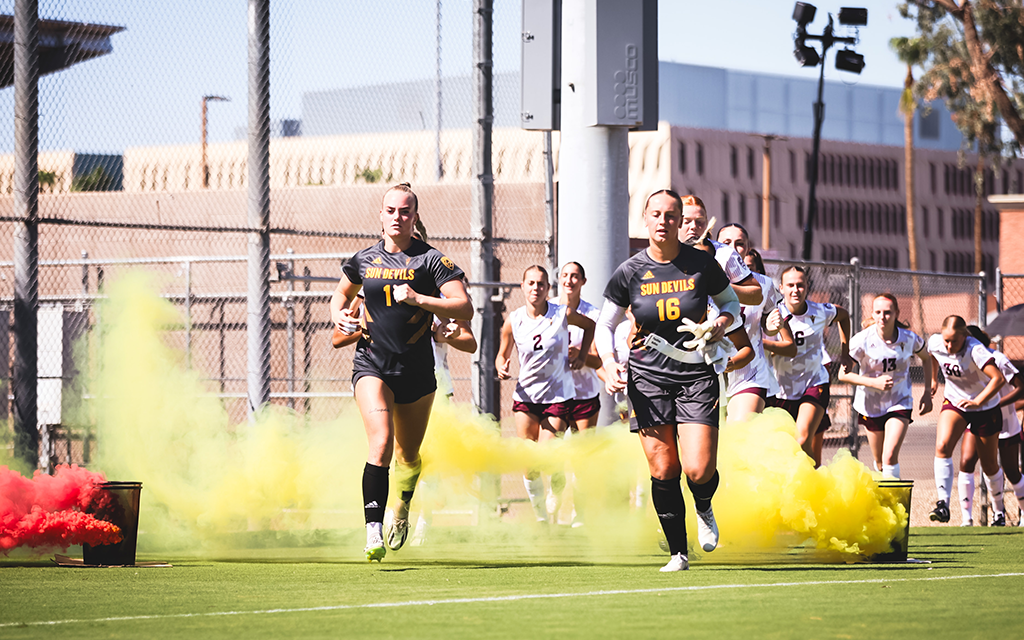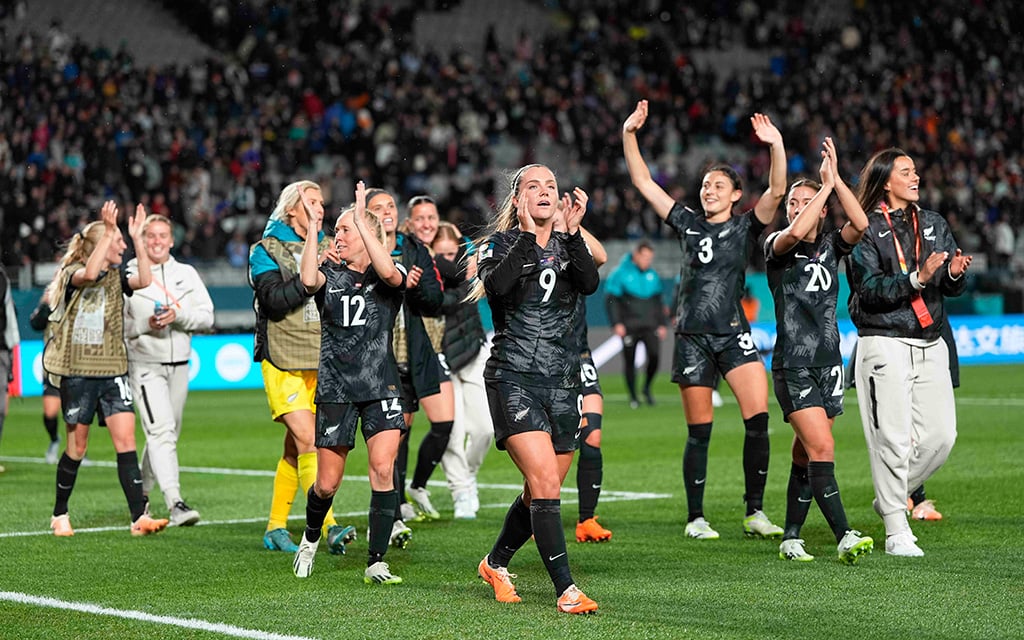
Elite international women’s soccer players, like Emilie Simpson from Cambridge, England, adapt to the scorching Arizona heat to play for Arizona State. (Photo courtesy of Sun Devil Athletics)
TEMPE – Upon stepping off the plane at Phoenix Sky Harbor International Airport, the brutal heat assaults the senses.
Over the summer, Phoenix had a 31-day streak of highs at or above 110 degrees. Cambridge, England, where ASU women’s soccer player Emilie Simpson is from, has exceeded 104 degrees Fahrenheit once in recorded history.
“The heat is obviously insane,” Simpson said.
Simpson is one of many elite international women’s soccer players who make the decision to come to the desert and ply their trade for ASU, often from places with drastically different cultures and climates.
Players come from countries as far away as Germany, Norway and Japan, playing in temperatures they’ve never experienced before.
They’re recruited from some of the top academies in the world. Simpson previously played for the Arsenal U21s (statistically the most successful club in English women’s soccer) and many have starred for their youth national teams. Forward Gabi Rennie played for New Zealand at the recent Women’s World Cup.
It’s a commonly trod path for overseas players. Of the teams that made the 2022 NCAA Division I Women’s Soccer College Cup, ASU had the third largest contingent of international players with 13.
However, this is not the case in men’s soccer.
“If a man plays soccer, you don’t really need an education because the money is that much more, especially in Norway and Europe,” ASU midfielder Ella Opkvitne said. “It’s getting better, but it’s not that good.”
Traditional men’s soccer powers in Europe and South America underfunded women’s soccer for years. The average salary in the Women’s Super League was reported to be $57,800 a year, less than the average English Premier League player makes in a week ($73,800 a week).
Often due to poorer compensation, playing careers are shorter in women’s soccer. There is more of a need to find a career outside of soccer in the women’s game than in the men’s game.
Many athletes are attracted to ASU by the prospect of a free university education alongside playing high-level soccer, allowing for better job prospects after their playing careers are over.
Opkvitne was previously at a sports school in Norway, but there wasn’t a way for her to combine high-level soccer and education after she graduated high school, something that coming to ASU allowed her to do.
Furthermore, Title IX ensured that the sport has been well-funded in America since the 1970s, while the rest of the world lagged behind. For decades America has had some of the best soccer facilities in the world via the collegiate system.
“The facilities are much better,” Opkvitne said. “It’s much more professional than what I’m used to. We have a training pitch and a game pitch. We have people doing things for us like bringing us water, doing our laundry, stuff like that. We didn’t have that back in Norway. It’s much more professional and even the facilities are bigger and better. “
Moving more than 5,000 miles to play soccer is a significant step, but for many it’s a necessary one on the path to playing professionally.
At the collegiate level, athletes compete for playing time with similarly developing players, whereas at professional teams they’re often competing with players who have already finished developing.
Lucy Johnson, a Sun Devils defender, played for Women’s Championship side Leicester City as a teenager, but chose ASU as she thought it was better for her development.
“I wanted a chance to develop further first and I think like three and a half years here gives you a chance to further develop so that when you do want to play professionally, you’re more ready,” Johnson said. “I can compete better here than what I would be able to back at Leicester because there were women that were far better than me when I was 16.”

ASU’s women’s soccer team attracts talent from around the world for a multitude of reasons. The program not only provides the opportunity to play high-level soccer but also a better path to playing professionally. (Photo courtesy of Sun Devil Athletics)
Transitioning from the academy to the first team is a tricky process, and often youth players get overlooked in favor of more experienced players. Playing for a top academy is no guarantee of success.
“Especially after the U21s if you were to move on to the first team, the likelihood of even playing is so slim, especially at a club like Arsenal where they have so much money,” Simpson said. “They can just go and get someone who is experienced. They won’t take a punt on someone in the academy.”
College soccer often serves as a bridge between academy soccer and professional soccer, and it is a well-established pipeline. Four players who graduated from ASU last year – Alexia Delgado, Nicole Douglas, Eva van Deursen and Olivia Nguyen – are now playing professionally.
Those who do get opportunities to play professionally at a younger age are not well compensated.
“Most of these girls can go play professionally at 18,” ASU coach Graham Winkworth said. “But then they go and make next to no money and then by the time they’re 23, they realize (they) don’t have a degree. So these girls, they’ll be 23, they’ll have a degree and then they can still go and play professionally and once their playing career is over they’ll have a degree to fall back on.”
Playing for ASU allows international players to develop further before turning professional and gives them opportunities to work outside of soccer after their playing career ends.
“I’ve had emails from players that chose to go directly to the pros, and they were like, ‘Oh, I wished I’d come to you first,’” Winkworth said.

